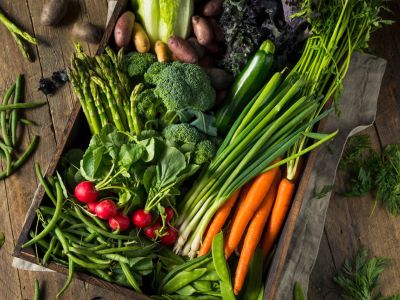When to Harvest Vegetables
Timing for harvesting vegetables is primarily dictated by the length of time they have been growing. This information is found on seed packets, but there are other indications of when to harvest vegetables as well. Veggies continue to improve or degrade after they are picked. When they are mature at harvest, their life process needs to be slowed by chilling, while immature produce like green tomatoes need to have that process sped up by storing at room temperature. Seed variety is one indicator of when to harvest vegetables, as is soil type, temperature, season, irrigation, sun, and where the vegetable has been grown – in the garden, indoors, or in a greenhouse. All that said, the best time to harvest vegetables is when commercial farmers do so, in the early morning. Produce harvested in the morning tends to stay crisp and fresh longer while veggies harvested during the heat of the day tend to wilt. If you can’t rouse yourself in the early morning, the next best time to pick is in the evening when the heat of the day has passed. Some veggies like tomatoes, zucchini, peppers, and various root veggies (like carrots) can be picked at any time of the day but should then go right into the refrigerator.
How to Harvest Vegetables
When harvesting vegetables, you are looking for ripeness. Ripeness involves all of your senses, from smelling and tapping on melons to eyeballing your peas for that just-so-plumpness, puncturing a corn kernel, and popping a couple of cherry tomatoes in your mouth. The when and how to harvest vegetables are unique to each crop. Beans and peas, for instance, should be harvested when the pods are full but not burgeoning, and while dark green and not fading in color. Corn is very particular. Once it is ready to harvest it begins to degrade after only 72 hours. Pick corn when the kernels are plump and juicy, and the silk is brown and dry. Onions should be harvested when their tops fall over and begin to yellow. Dig up the onions and allow drying or curing for several days then cut off the tops and store them in a cool, dry area.
Additional Garden Harvest Tips
Other veggies should be harvested when they reach their mature size. These include root crops, winter squash, and eggplant. Summer squash is best picked when a bit on the small size. When you allow zucchini to get huge, for instance, it becomes tough and filled with large seeds. Tomatoes should be fully colored but will ripen inside if picked immaturely. Heirloom varieties with a tendency to crack should be picked before the cracking extends into the interior of the tomato, which can then introduce bacteria. Over time, you will learn to recognize when and how to harvest your crops. Once you have picked your veggies, be sure to store them at the correct temperature, at the right moisture level for the particular crop, and with sufficient air circulation to minimize wilt and tissue breakdown.
